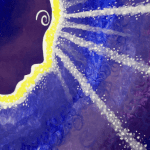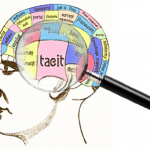 It is amazing how many articles and videos I have watched lately in which they are talking about decision making based on “gut feel.” It is also disheartening how many first responders I have interviewed who have admitted to me that they have dismissed their gut feelings and proceeded to do things that resulted in bad outcomes. Let’s explore the origins of intuition.
It is amazing how many articles and videos I have watched lately in which they are talking about decision making based on “gut feel.” It is also disheartening how many first responders I have interviewed who have admitted to me that they have dismissed their gut feelings and proceeded to do things that resulted in bad outcomes. Let’s explore the origins of intuition.
Length: 17 minutes
click the YouTube icon to listen
_____________________________________________________
If you are interested in taking your understanding of situational awareness and high-risk decision making to a higher level, check out the Situational Awareness Matters Online Academy.
CLICK HERE for details, enrollment options and pricing.
__________________________________
To understand how you can benefit from intuition, we must first lay a foundation of where the knowledge comes that forms intuition. Your brain is constantly assessing and gathering information – some of which you do with conscious awareness and some is gathered completely unintentionally. The gathered information is stored as “patterns” of information. This information starts in short term memory and can then be forgotten or sent down the highway to your longer term memory stores. How exactly this happens is a complex process beyond the scope of this article.
 Once information reaches its long term memory destination there are a number of factors that influence your ability to recall it (recency, familiarity, emotional connections, routines and repetition to name a few). Some information is recalled consciously, which is to say you have complete awareness of the information (examples would include your home address, names and faces of loved ones, where you were and what you were doing when specific tragic events occurred, etc.)
Once information reaches its long term memory destination there are a number of factors that influence your ability to recall it (recency, familiarity, emotional connections, routines and repetition to name a few). Some information is recalled consciously, which is to say you have complete awareness of the information (examples would include your home address, names and faces of loved ones, where you were and what you were doing when specific tragic events occurred, etc.)
Other information is not so easy to recall into conscious awareness. Simply because you cannot recall it does not mean, necessarily, that you’ve forgotten it. Occasionally you’ll have something happen (or see something… or hear something) that will cause a memory of long ago to flood back into consciousness. This is an example of tacit knowledge – knowledge that resides outside of everyday awareness.
Another form of tacit knowledge is the knowledge that never comes into conscious awareness, but you nonetheless know it. Take for example, driving a car. Most experienced drivers are able to operate a vehicle at highway speeds while carrying on conversations or while thinking about things other than driving. Have you ever been driving somewhere, arrived at your destination and realized you don’t remember the drive? You really weren’t paying attention to driving (perhaps because you were talking to someone, singing along with songs, or were deep in thought)?
 How were you able to safely operate the vehicle? Tacit knowledge. You were driving the vehicle with a reliance on stored information from past driving experiences (and past training… and past video games you’ve played… and past movies you’ve watched). All that subconscious (tacit) knowledge allows you to pay attention to other things and depend on intuition to guide you down the highway. It seems a little scary to think about driving this way, but we do it without even realizing it.
How were you able to safely operate the vehicle? Tacit knowledge. You were driving the vehicle with a reliance on stored information from past driving experiences (and past training… and past video games you’ve played… and past movies you’ve watched). All that subconscious (tacit) knowledge allows you to pay attention to other things and depend on intuition to guide you down the highway. It seems a little scary to think about driving this way, but we do it without even realizing it.
The reliance of tacit knowledge in driving is what gets some young drivers into to trouble. They watch parents and other experienced drivers and are lulled into believing that operating a vehicle is easy (because the “expert” driver makes it look so easy). The young driver doesn’t have the benefit of stored tacit knowledge, yet they continue to talk to other passengers, talk on cell phones, text, sing along to the radio and engage in deep thought and lose track of the fact that they are driving a vehicle at highway speeds. Absent of a store of tacit knowledge, the young driver does not benefit from intuition. Because they lack experience, driving is a conscious act and the brain cannot give its attention to two conscious tasks simultaneously, causing young drives have more near-misses and accidents.
Intro music
Safety Dance (1982)
Men Without Hats
GMC – Virgin Records
Our sponsor:
Midwest Fire
MidwestFire.com

Intro music
Safety Dance (1982)
Men Without Hats
GMC – Virgin Records
Situational Awareness Matters! website
www.SAMatters.com
Firefighter Near Miss Reporting System
http://www.firefighternearmiss.com/
The mission of Situational Awareness Matters is simple: Help first responders see the bad things coming… in time to prevent bad outcomes.
Safety begins with SA!
Share your comments on this article in the “Leave a Reply” box below. If you want to send me incident pictures, videos or have an idea you’d like me to research and write about, contact me. I really enjoy getting feedback and supportive messages from fellow first responders. It gives me the energy to work harder for you.
Thanks,
How to reach me…
Email: Support@RichGasaway.com
Phone: 612-548-4424
Facebook Fan Page: www.facebook.com/SAMatters


